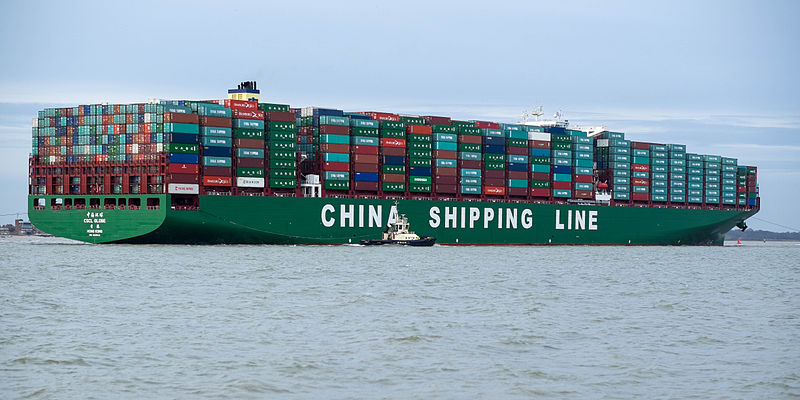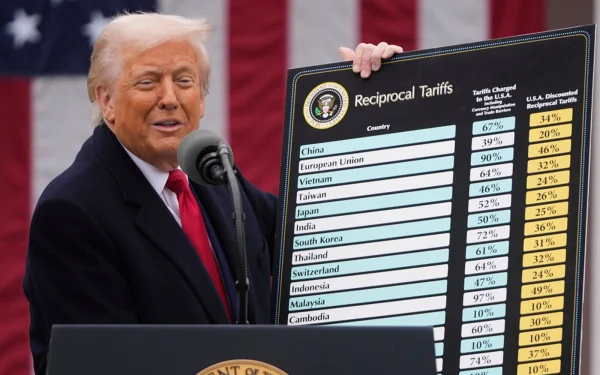The Art of Trade and War: China and The U.S.
Courtesy of Keith Skipper. Shipping freights such as these are the main form of transportation for transfering exports and imports between the U.S and China.
China and the U.S. have been competing in the trade market for dozens of years as some of the biggest countries involved in global trade. Despite being the leading market competitors, the two countries have always traded with each other. From soy beans to heavy machinery, both countries have benefited from regular, friendly trade. However, a trade war between the U.S. and China could be catastrophic for both economies.
The tariffs that President Donald Trump is putting into place are nothing to look lightly at. According to the Washington Post, President Trump is getting ready to enact tariffs worth sixty billion dollars, which will oppose the import of Chinese products. These tariffs could be the first spark in the roaring fire of an oncoming trade war.
A trade war can be defined as an event in which a group of countries try to damage foreign economies by enforcing quota restrictions or tariffs, a tax that needs to be paid on a particular export or import. The U.S. plans to put tariffs on steel and aluminum, which could negatively impact the U.S. economy. According to CNBC, imposing tariffs on China would lead to losses in jobs and a rise in the prices of consumer goods, which could drive down financial markets.
However, some U.S. trade companies are fighting against the Trump Administration’s plan. In a statement to CNBC, forty-five trade associations urged the administration to “work with the business community to find a measured but effective solution to China’s protectionist trade policies.’’ CNBC reported that the Washington Based Retail Industry Leaders Association sent a public letter to President Trump, which stated that the “Tariffs are a hidden tax on Americans—plain and simple.” The organization further detailed that “more than 41 percent of clothing, 72 percent of footwear, and 84 percent of travel goods sold in the U.S. are made in China.” CNBC also reported that many large retailers have sent letters to President Trump, urging him to put a stop to the tariffs. Some of these retailers include Target, Walmart, Macy’s and Best Buy.
China is also strongly against the tariffs and is doing its best to avoid a trade war with the U.S. In a conference with China’s annual parliament session, Li Keqiang, China’s premier, said “No one will emerge a winner from a trade war… What we hope is for us to act rationally instead of being led by emotions.”
Overall, the major problem that the U.S. currently faces is disagreements with China’s past approach to trade. According to the South China Morning Post, the U.S. has accused China of using its exchange rates to make their imported goods cheaper than the actual price label. In fact, from 1992 to1994, China was actually branded as a “currency manipulator” by the U.S. The New York Times also claims that China had once caused the U.S. to lose about 600 million dollars through intellectual property theft.
The U.S. is not alone with concerns over intellectual property theft, as Japan, the European Union, Germany and Canada have expressed problems with the way China manages intellectual property theft, reports Reuters. According to the New York Times, China does not offer any protection for intellectual property, and it has turned a blind eye toward its industrial espionages by asserting that they were just a passing phase. Despite some of these issues, China remained as one of America’s main trading partners. According to Every CRS Report, China is also the largest holder of the “U.S. Treasuries Security,” which are debt obligations that the U.S. government currently holds. With Trump’s new tariffs, the U.S. may be trying to lower the U.S. trade deficit of 357 billion dollars, according to the Washington Post.
This is not the first trade war to come about. The biggest trade war in the last century happened because of the Smoot-Hawley Tariff Act of 1930. According to The New York Times, the act put steep tariffs on 20,000 imported goods which, in combination with World War I, prolonged the hard times that the Great Depression brought. In the end, the U.S. export fell about 61 percent. In a statement to the New York Times, Mark William Palen, a history professor at the University of Hester and the author of “The Conspiracy of Free Trade,” remarked, “It seems the winner are the nations that don’t take part in it.”






